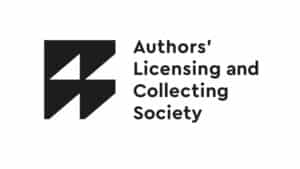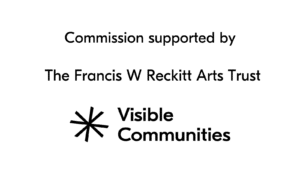Are you a literary translator struggling to get your foot in the door? Or has your proposal been accepted by a publisher, but you aren’t sure how to move forward?
Translators and NCW Visible Communities residents Nadiyah Abdullatif and Anam Zafar offer their tips for handling rejections and offers in the world of literary translation publishing.
This comprehensive blog is packed full of expert advice, quotes and resources, grounded in Nadiyah, Anam and a host of other translators’ experience. Their guidance will help to prepare you for navigating literary translation publishing, through the ups and the downs.

Reframing rejection and strengthening success: Translators’ tips for resilience
Introduction
As literary translators who have spent a couple of years in the field, we have racked up some painful rejections and hours of work lost on projects that could not progress. While we’ve had successes too, rejection can feel so threatening to the viability of this career, especially when certain factors make it difficult to allocate literary translation as much time as we’d like. For example, the need to focus on paid opportunities, often in the form of commercial work, can take us away from literature. Jeffrey Zuckerman succinctly addressed the issue of underpaid and unpaid literary work in an interview for the TA First Translation Prize:
‘Translators are often asked to create samples for free and to translate books for a fraction of what English-language authors are paid for their books. Such practices create a monoculture of well-off practitioners and deter less-privileged newcomers from bringing their essential viewpoints and backgrounds to the industry. (The fact that I write these words as a white male is not lost on me; it is why I champion authors outside the status quo whenever I can.) The easiest way to solve this would be for publishers to pay their contractors fairly, and to actively diversify their stable of freelancers.’
We decided to address the rejection-success seesaw during our 2023 residencies with the National Centre for Writing through creating a resource that deals with the most urgent questions we have had, in the hope of providing support and reassurance to other translators who might share these feelings—emerging and experienced alike. We speak of rejection here in broad terms, encompassing a whole range of hurdles that could lead to the death of a dream translation project. While we want to avoid softening the harsh realities of working as a literary translator (we don’t think doing so helps anyone), we equally want to avoid discouraging people from what can be a rewarding field with immense cultural value.
Looking back, we realise we have often looked for ways to turn an apparent rejection into some form of success, to salvage something from the unpaid time devoted to a project, or to get the most out of hard-won successes, for the benefit of our mental health as well as our finances. By focusing on mental and financial resilience, we can all hope to craft a more sustainable literary translation career. This non-exhaustive round-up of what we’ve learned so far includes contributions from some translator friends, as a nod to how generous the translators in our networks have been in helping us with our careers and an encouragement to all of us to lean into the communities we belong to.
Part 1: Rethink your response to rejection
When pitching to publishers, rejection rates are high, often due to limited budgets within publishing and high competition. The emerging translator’s life often risks resembling that of a struggling artist (a phrase we’ll come back to): literary translation becomes a side hustle, subsidised by commercial translation or an entirely different job. Plus, much of the precious time that could be spent creatively is instead spent completing endless funding applications or repeatedly pitching the same projects. But these tasks can’t be avoided, because that’s what many of us have to do to win book-length contracts.
In such a context, rejection, despite being normal, can be beyond dispiriting. For literary translators on low incomes or who depend entirely on freelance contracts, they can be anxiety-inducing threats to our future, making us question whether literary translation is a sunk-cost fallacy. It’s not only the impact on our businesses, but also our attachment to the texts; we work on literature because we love it, and we tend to choose projects we are passionate about. The hours spent on a rejected project aren’t just a drain on our time and finances, but our emotional energy, too, especially when we’ve already been on a rollercoaster of experiences with the text. However, it’s important to remember that rejection isn’t necessarily the end of the story.
When I failed to get permission from a rights holder to pitch a novel, I managed to submit my translation sample to a literary translation competition and was subsequently longlisted…

‘… The rights holder also suggested another text that I could work on. I also prepared a translation sample for that one, but by the time it was accepted by a literary magazine, the rights situation had changed, meaning the magazine publication couldn’t go ahead. I kept checking in, and a year later, the situation was resolved, the excerpt published, and a publisher has now shown interest in the full-length translation.’
Different kinds of rejection are caused by different cogs in the system:
- It can present the first hurdle if the rights holder or their agent informs you that the rights have already been sold and a full-length translation already underway (the somebody-beat-you-to-it rejection). It’s worth noting that while you can pitch a text without securing the rights holder’s approval, many translators and publishing organisations prefer to have prior approval in principle, since publication of a copyrighted text can only go ahead with their permission.
- Worse, the rights holder never replies, or stops replying when you’ve already started working on the text. It’s hard to know whether this is down to overloaded inboxes, how long to hold out hope, and how many follow-ups to send (the silent treatment).
- Even if dealing with the rights holder is the publisher’s responsibility and not yours, you might still lose a tender where several people translate the same sample for the publisher to decide between (out-of-an-overwhelming-number-of-candidates-you-were-underwhelming or we’ll-keep-you-in-mind-in-the-future).
- In some cases, the rights situation proves so complicated that no amount of trying will help. This can happen, for example, when a deceased author’s relatives, the new rights holders, prove uncontactable (rejection by the universe).
- Finally, even when your pitch is accepted, you may find that the fee offered or the contractual terms make the project unfeasible, or that the offer is dependent on external funding which can’t be secured (falling at the last hurdle).
While it’s important to express the doom and gloom rather than bottling it up for a later implosion, we should, more importantly, know how to counteract it. The first step to reframing your approach to rejection could be renaming your “Rejections” folder to a more neutral-sounding “Not taken forward”. The next steps are about knowing all the ways to “get somewhere” with a project, as well as knowing when it’s time to let go.
Tip 1: Recycle the Material
If you had little luck pitching a full-length translation, could you still place an extract with a literary magazine—or your own website? As placing a translation on your website is still a form of publishing, it is essential to obtain the rights holder’s approval for this. And it might so happen that a publisher eventually snaps up the project that way.
‘I started including sample translations on my website when I first set it up. My main translation experience had been as a commercial translator of fashion and textiles related website content and EU policy, while studying for a PhD in Translation Studies, and I wanted to branch out into literary and non-fiction translations. I was aware that, without knowing any of my work, editors and publishers would be unlikely to offer me full-length book translation contracts, so I decided to feature a portfolio on my website, initially with samples of books I was pitching, and then later with features from published book translations. For me, it’s another way of showcasing who I am and what I do, and I’ve had positive feedback from editors who said they found it helpful in getting to know my translation style, experience and expertise. I’ve recently been contacted by a publisher about one of the samples on my website, 5 years after I first started working on the translation — so you never know where a publicly accessible portfolio might lead.’ – Rebecca DeWald
Rejection isn’t the end of the road
If you lost out in a tender, perhaps payment for the sample (when it’s offered) and connecting with the publisher was reward enough; they might reach out to you for future projects and will be more likely to respond to your future emails. It’s not unheard of for publishers to inform “rejected” translators of other opportunities or introduce them to untranslated authors.
Even when there seems to be no chance of securing a publication for a book you’ve been pitching, your hard work can be used for other forms of recognition. You could submit your translation sample to competitions or use it in applications for workshops and residencies. Rights do not always need to be secured in these situations.

Perhaps you will now be well-placed to write a book review or an essay on the work, or use the text as content for leading a workshop. For the latter two uses, fair use rules should allow you to include short segments of the original and/or your translation without breaching copyright—it’s worth checking country-specific laws on this.
At worst, consider everything in your “Not taken further” folder as a professional development exercise in both pitching and translation. Rereading past work can be a motivational boost if you’re proud of the translation and/or pitch materials, or useful learning material if you feel that your style has since evolved. Cultivating internal satisfaction is a healthy counterbalance to the pressure to seek external validation.
Tip 2: Be persistent and systematic
In our experience, many publishers need a nudge before responding. If you’re not sure whether the silence you’re hearing is a rejection, try emailing them again. It’s worth doing this a couple of months after your initial contact and doing it more than once if needed. When enquiring about translation rights for the original text, try and find an email address specifically for the publisher’s foreign rights department. When emailing prospective publishers about your translation, try and find a named contact. You could see if someone in your network has worked with the publisher before and can introduce you to a particular editor.
Where you have had a clear negative response, you could propose something else on a smaller scale:
‘When I was starting out, one author told me I wasn’t experienced enough to do justice to their novel. I sent a sample translation anyway and asked if they’d be happy for me to submit the extract to a literary magazine. Not only did they agree, but they changed their stance on the full-length novel and encouraged me to look at their other works too.’ – Nadiyah Abdullatif
Having a systematic approach to pitching can help you to remember when a publisher might need a nudge, or what contacts you already have in the publishing world.
I use a spreadsheet to make the pitching process more efficient, and to keep track of who I’ve written to. Each time I write to a new editor, I make the most of my momentum and write to four others at the same time – tweaking the email according to the relationship I have with that editor…
Ruth explains:
‘… I have one spreadsheet for all my publishing contacts and add a new column for each new project I’m pitching. That way I can quickly see who I’ve written to about this particular book, and also remind myself what I’ve talked to a certain publisher about in recent years. Some conversations with editors go back over a decade, and they might have forgotten who I am, so it can help to pull out an old email thread and make contact there first before starting a new correspondence about a new project out of the blue.’
Tip 3: Wait it out, take a break or cut your losses
Sometimes what seems like a rejection just needs time. It can often take several months to hear back from publishers about pitches. Since it can be frustrating to wait on responses for numerous literary projects at once, working on something else in the meantime might be the best approach. For example, it might be helpful to focus on commercial work for a while and aim to develop no more than three literary projects at a time.
That said, even after chasing, you might decide it’s time to shift your attention elsewhere. It can feel hard to justify investing time in a new project after pouring time and effort into a rejected one, but remember that rejection in this field often happens for reasons out of your control.
There are times I’ve let a book go even after three years of pitching. Sometimes a work no longer speaks to the current conversation because no editor has picked it up in time, or what the book addresses might have been over-analysed or over-publicised and now the general readership has moved on…

Sawad elaborates:
‘…Financial constraints are also a factor: I am not being paid by an author or agent to translate the excerpt I will show publishers, so if I want to pitch a work I need to get an excerpt placed with an online outlet, which would pay me for that excerpt. If I haven’t been able to place it with an online outlet, I have to let it go by the wayside until either I get a bigger project that allows me to finance myself to do a longer excerpt for that original work, or I move on from that book or give it to a colleague or mentee. Sometimes I’ve also had to step back from working with an author because of misaligned expectations of what a translator does, for example authors who expect me to do things an agent should be doing.’
You might even decide to take a rejuvenating break from literary work—and if you’ve experienced one rejection too many, it’s okay to close this chapter completely. While other translators can be understanding when they hear a colleague considering this, the assumption often hangs in the air that the person will eventually come back to literary translation. And while that assumption often proves true—literary translation is addictive for many of us—it’s important to recognise that we all have different circumstances. Despite the progress being made to improve accessibility from various angles, we need to normalise the decision to step away from a field so fraught with difficulty. Taking a break or breaking up with literary translation may be best for your health and finances and shouldn’t be equated with failure by you or your peers. As discussed by Anna Codrea-Rado on the Authors’ Matters podcast, creative freelancers don’t have to live like “struggling artists”—we can pivot.
Part 2: Focus on your successes — and how to build on them
Securing a job to translate a full-length publication can feel like hitting the jackpot—only to realise the payout is in Monopoly money (for some language pairs more than others, and depending on the publisher you are working with). When comparing your fee to the amount of time spent on the work, it’s often hard to deny we are in a poorly paid profession. But as well as the upfront fee you should receive from the publisher or grants organisation, more can be done to receive as much financial compensation as possible for your labour.
Tip 1: Negotiate before signing
The excitement and relief of finally being offered a contract can make it tempting to “just sign” so you can get on with the project. But it’s worth easing off the gas during what is, we should remember, known as the contract negotiation stage—make sure you do negotiate. For starters, check that you’ll receive royalties and retain copyright of your translation. And if you’re a member of the Society of Authors or Authors Guild, always send your contract to their vetting teams before signing. It’s worth having an expert pair of eyes scan those clauses even if it appears you’re getting a good deal—and if the vetting team agree that it is a good deal, it’s still important for them to have seen your contract, to give them the fullest picture of current relationships between translators and publishers.
‘One thing that’s happened a couple of times – though I guess this is basic negotiating tactics really – is that I pushed for higher or broader royalties, was told no, but managed to use that to at least negotiate a higher basic fee for the translation. Something else that keeps coming up is ensuring there’s a commitment somewhere in the contract to actually publish the book, which publishers seem happy to include and provides a bit of extra peace of mind when part of your fee is only due upon publication. I’ve also secured commitments to feature my name at least somewhere on the jacket (I pushed for the cover, to no avail!)…’ – Jesse Kirkwood
Tip 2: Sell your translation — twice
You can expand the readership, and sales, for your book by selling your translation to multiple publishers operating in different territories and receiving additional royalties for the co-edition. While larger publishers have the capacity to organise this themselves, smaller publishers may appreciate your input. If the timing works out, co-editions can be given the same publication date, which helps with publicity.
Taking translation into English as an example, this will only be possible if your initial publisher does not have world English rights but only for the UK or North America, for example—although they might be willing to sell on their rights for some territories.
I recently translated a book for a US publisher which had bought only North American rights. I then helped the book’s agent to find a UK publisher, which was happy to buy UK & Commonwealth rights. The original translation was ‘paid for’ by a grant. After some friendly nudging, I discovered that both agent and UK publisher were not planning to pay me anything further, either for the UK rights to the translation or in terms of any ongoing royalty.
‘…I plucked up courage and said I was expecting ideally both a one-off payment for the right to use my translation and a royalty on the UK edition’s sales, but would accept one of the above. There was some hoo-ha, and late-stage negotiations between the UK publisher and the agent had to be paused because no one had budgeted for my portion. But in the end I received a second contract, a small one-off payment and a small royalty on all the UK editions. I’d have had nothing if I hadn’t kicked up that fuss.’
Tip 3: Reach a wider audience through promotional activities
You can get paid to promote your work. Sometimes the translator is automatically included in the publicity process for a translated book; other times you can ask for your paid inclusion in publicity to be stipulated in the contract. A translator’s paid publicity work could involve speaking at events about the translation process or in conversation with the author; workshops related to the book; or creating social media content. If your translation was funded by an organisation like English PEN, part of this grant might be allocated for publicity.
As well as this, with the publisher’s permission, extracts from the book can be placed with online outlets in the run-up to the publication date. This could boost sales once the book is out, as well as earning you some extra cash from that outlet in the meantime.
‘Publicity can feel like an endless time sink, especially after all you’ve already given this book so much. A few thoughts: Don’t focus on print reviews. Do think about related short pieces your author could write, which you could place (& ideally get paid for translating!). Do keep a list of people who write and talk about books in your language(s) and genre(s); reach out to them individually about your book. Keep a short list of relevant publications, festivals, organizations, and university departments that might be able to invite you and your author. Online talks have created new opportunities to reach readers around the world; think widely & creatively about the English-language audience for your book. There are excellent literary critics in Nigeria, for instance, keenly interested in new works in English translation.’ – Marcia Lynx Qualey
Tip 4: Apply for awards
Applying for every award your publication is eligible for will increase the chances of a win or at least a feature on the longlist. Increased exposure of that particular work could help sales, and exposure of yourself as a competent translator could lead to more successful pitching in the future or being contacted directly about a project. While it is usually the publisher who needs to submit the award application, you may find yourself putting in varying amounts of labour – sending a list of eligible prizes or a nudge about an upcoming deadline can be helpful, and your pitch materials can often provide content for applications.
‘Being longlisted for the International Booker Prize was absolutely a huge help for the book and for me more generally, but the process for how it happened was pretty straightforward…’
Reuben continues:
‘… I think my editor sorted most of the application details and sent it off with little input from me, perhaps a couple of questions and a quick bio while I was drafting the book itself. We also had a quick brainstorm about other awards to submit it for. The book came out after the longlist had been announced anyway, so the first edition had the longlist logo on the dust jacket. I’m sure this will have convinced some buyers, and perhaps a couple of the reviews we got were motivated by the longlisting too. Being able to use the longlisting when pitching and advertising my own translation work has certainly got my foot in the door in a few places.’
Tip 5: Get paid for library copies and more
 As well as the royalties received from your publisher, you can increase your income for published works by receiving payments for secondary rights from the Authors’ Licensing and Collecting Society (ALCS; eligibility criteria here; if you live outside the UK, contact them to find your local collecting society) and the UK and Irish Public Lending Right Scheme (PLR; eligibility criteria here). From the ALCS website:
As well as the royalties received from your publisher, you can increase your income for published works by receiving payments for secondary rights from the Authors’ Licensing and Collecting Society (ALCS; eligibility criteria here; if you live outside the UK, contact them to find your local collecting society) and the UK and Irish Public Lending Right Scheme (PLR; eligibility criteria here). From the ALCS website:
‘”Secondary rights” (or “secondary use”) involve situations where a third party uses a work that’s already been distributed to the public – such as when schools photocopy books they own, or libraries lend books, or overseas TV companies retransmit UK TV signals… Royalties from “secondary rights” are paid to writers through ALCS – unless the royalties come from UK library lending, when the Public Lending Right (PLR) pays them.’
The bi-annual payments from ALCS cover books, scripts, articles and visual contributions, and with lifetime membership free for Members and Associates of the Society of Authors, and only £36 otherwise, it’s a no-brainer. Don’t wait until you have a long list of publications: sign up as soon as you have your first one, and make it a habit to register all subsequent eligible works.
Final words
Sometimes an outside opinion can help reframe what you see as your failures and remind you of your successes. There are a growing number of online groups often serving specific communities and helping to enforce that in the seemingly solitary activity of translation, too, there is power in the collective:
- Emerging Translators Network (Google group)
- ALTA BIPOC Caucus (Discord server; open to non-ALTA members)
- D/deaf, Disabled and Neurodivergent Translators Discord Community
- FELT: French>English Literary Translators (Slack channel)
- #teamtranslator (Slack channel; primarily for commercial translation)
‘For those of us who struggle with anxiety, difficulties with executive functioning, chronic health problems, burnout, whatever it may be, feelings of “success” and “failure” can creep in early. It’s often the case that simply being able to submit the work or to apply to the thing on time is a real success to celebrate in itself. At the same time, when we’re unable to do so, it can feel like a big failure, and these are the occasions when we most need our communities, who support and encourage us, and with whom we can discuss and exchange ideas about how to work in a way that allows us to be kinder to ourselves.’ – Clare Richards (founder of the D/deaf, Disabled and Neurodivergent Translators Discord Community)
Various tools have also been developed to build freelancers’ financial and mental resilience. Creative Scotland’s Illustrated Freelancer’s Guide contains tips for dealing with late payments, negotiating contracts, setting rates and managing savings. Another tool is Balance, an online resource of self-paced modules designed specifically for creative freelancers and split into two sections: Balance Your Mind and Balance Your Books.
Balance started as a webinar series during the pandemic, designed to help creative freelancers’ mental health during that difficult time. So much of what I value about my working attitude today — including knowing when to say ‘no’ and preventing burnout — is a result of those webinars…

‘…Creative freelancing was approached not as something irresponsible or ‘not a real job’; instead, a space was created to celebrate people who understood the importance of the arts in society and promote the longevity of their careers. I realised that, with the right measures in place, pursuing a passion could be possible.’
If anyone wants to create a similar programme specifically for literary translators, be our guest…

 Nadiyah Abdullatif is a Mauritius-born, Scotland-based editor and translator working from Arabic, French, Mauritian Creole and Spanish into English. Her translations of Mauritian literature, comics and graphic novel excerpts have appeared in Wasafiri, ArabLit Quarterly and The Markaz Review. Her latest project, a co-translation of a Lebanese graphic novel titled Yoghurt and Jam (or how my mother became Lebanese) (Balestier Press, 2023), received a PEN Translates award. She has previously been a translator-in-residence with the National Centre for Writing and spent this year’s residency building her work on Mauritian literature and exploring underrepresented languages and genres in translation.
Nadiyah Abdullatif is a Mauritius-born, Scotland-based editor and translator working from Arabic, French, Mauritian Creole and Spanish into English. Her translations of Mauritian literature, comics and graphic novel excerpts have appeared in Wasafiri, ArabLit Quarterly and The Markaz Review. Her latest project, a co-translation of a Lebanese graphic novel titled Yoghurt and Jam (or how my mother became Lebanese) (Balestier Press, 2023), received a PEN Translates award. She has previously been a translator-in-residence with the National Centre for Writing and spent this year’s residency building her work on Mauritian literature and exploring underrepresented languages and genres in translation.
 Anam Zafar is a translator based in Birmingham, UK, working from Arabic and French to English. In 2023 she received a PEN Translates Award for her co-translation, with Nadiyah Abdullatif, of the graphic novel YOGHURT AND JAM (OR HOW MY MOTHER BECAME LEBANESE) by Lena Merhej (Balestier Press, 2023). In 2021 she received the Gulf Coast Prize in Translation and the Stinging Fly New Translator’s Bursary. She also volunteers for World Kid Lit, is a member of the Translators Association’s Access Working Group, and is an Editorial Board member for The Linguist. Other collaborations with the National Centre for Writing include a translation mentorship with Meena Kandasamy (2020-21) and delivering creative translation workshops to schools through the Stephen Spender Trust. Twitter: @anam_translates; www.anamzafar.com. Image (c) Aamna Zafar.
Anam Zafar is a translator based in Birmingham, UK, working from Arabic and French to English. In 2023 she received a PEN Translates Award for her co-translation, with Nadiyah Abdullatif, of the graphic novel YOGHURT AND JAM (OR HOW MY MOTHER BECAME LEBANESE) by Lena Merhej (Balestier Press, 2023). In 2021 she received the Gulf Coast Prize in Translation and the Stinging Fly New Translator’s Bursary. She also volunteers for World Kid Lit, is a member of the Translators Association’s Access Working Group, and is an Editorial Board member for The Linguist. Other collaborations with the National Centre for Writing include a translation mentorship with Meena Kandasamy (2020-21) and delivering creative translation workshops to schools through the Stephen Spender Trust. Twitter: @anam_translates; www.anamzafar.com. Image (c) Aamna Zafar.
This Dragon Hall Cottage Visible Communities residency is generously supported by the Francis W Reckitt Arts Trust.
You may also like...
‘In the Language Slipstream’ by Crispin Rodrigues
A commission from our 2022 virtual resident on code-switching, speech acts and biracial-bilingual identity

15th February 2023
5 tips for translating culture
Essential advice from translator Nazry Bahrawi

30th September 2021
Chi Ta-wei & Jeremy Tiang
Translator, fiction writer, and academic researcher Ta-wei Chi in conversation with novelist, playwright and translator Jeremy Tiang

9th September 2021






